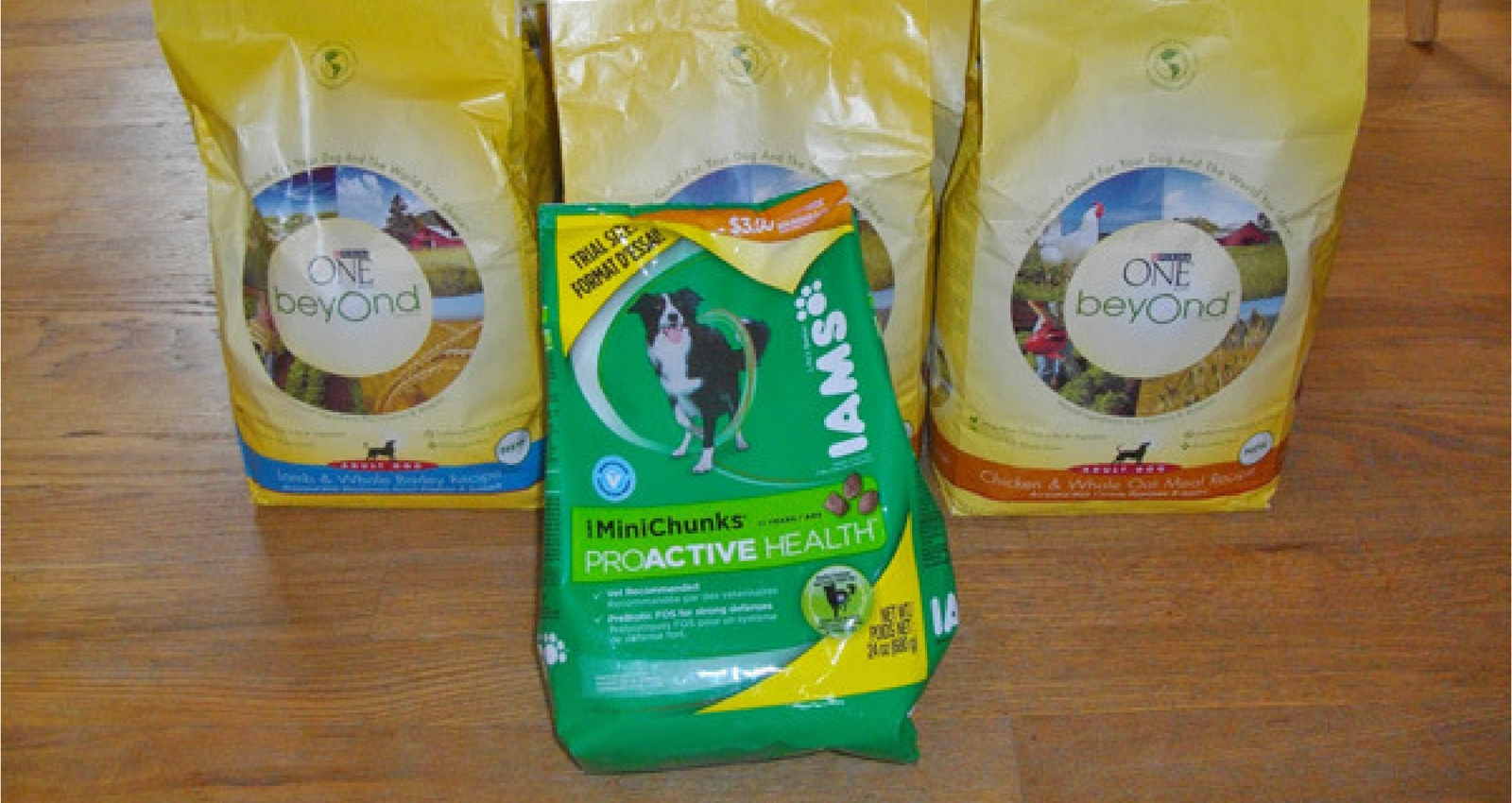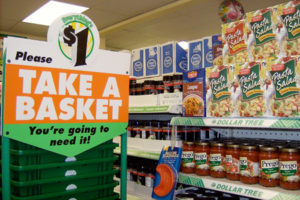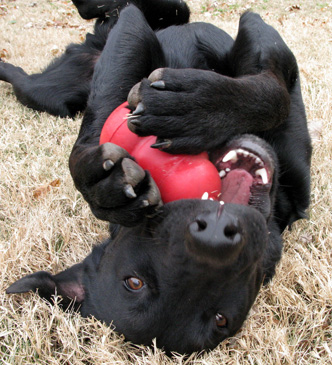The High Price of Convenience
Why Feeding That Bag of Pet Food Will Cost You In The Long Run


Isn’t your health worth more than that? Shouldn’t it be the same for your pets?
Food safety is a hot topic right now.
Most people are aware that WHERE you get your food from is just as important as WHAT you’re eating. We all know it’s probably a bad idea to buy food items from the local dollar store, or stock up on food stored at Walmart. For the most part, the adage “you get what you pay for” holds true.
But what you may not realize is that many of the products and ingredients found in your local grocery store can be just as risky, and often contain pesticides, steroids, antibiotics, and other bad additives, so reading the labels of everything you buy is especially important.
Don’t make the assumption that it’s a healthful product just because it says “Organic” or “Natural” on the label.
Finding quality foods without additives and pesticides can be a challenge for your own diet, but it gets even trickier when considering all of the options available for your pet’s diet.
In this post, I’ll identify some of the common issues with feeding processed diets, and address why feeding cheap, processed pet foods now will ultimately lead to more expensive consequences in the future.
The Problem With Commercial Pet Food
Most of the commercially produced pet foods are produced by these top five corporations. I’m sure you’re not surprised to learn that none of these companies specialize in pet food. What is their specialty? Who knows. They seem to sell everything from hair dye to cleaning products to candy bars.
The problem here is that these big corporations are not testing their own products well enough to inform the public of the presence of heavy metals, antibiotics, drugs, chemicals, pesticides, and molds in their ingredients. Many of these companies utilize lower-quality ingredients (much of which is recycled from rendering plants), and have poor quality control procedures in place. Pet food recalls of the products created by these manufacturers are fairly common now. Just take a look at the long list of products on the Recall page of watchdog site, Truth About Pet Food.
In the long run, these kinds of processed foods just aren’t optimal, and tend to lead to health problems in pets later on in life.
Endocrine Disruptors and Why They Matter
Much of the reason why processed foods cause so much harm is due to endocrine disruptors.
What are Endocrine Disruptors (EDs)?
“An endocrine disruptor is a synthetic chemical that when absorbed into the body either mimics or blocks hormones and disrupts the body’s normal functions. This disruption can happen through altering normal hormone levels, halting or stimulating the production of hormones, or changing the way hormones travel through the body, thus affecting the functions that these hormones control. – National Resources Defense Council”
Thanks to recent research, consumers are becoming more aware about the presence of endocrine disruptors in processed food and beverages.
Plastic is a common culprit of these endocrine disruptors. These chemicals can be traced to the plastic lining in canned pet foods, as well as the lining in many beverages for people (beer, sodas, fruit drinks, or bottled water).
Heat, solar radiation exposure, and time can cause plastic to break down, causing biospenol-A (BPA) to leach into food products. So, it’s a smart idea to check the expiration date of the products you purchase, and be sure to store them carefully.
Other common sources of endocrine disruptors are:
- Cosmetics
- Fungicides
- Insecticides, pesticides, and herbicides
- Detergents, resins, and plasticizers
- Fat from meat and dairy products
- Dioxins, PCBs, flame retardants
- Phytoestrogenic plants, herbs, and foods (GM soy)
These won’t all be relevant sources for your pets, but I hope this list emphasizes how pervasive these synthetic chemicals are!
Endocrine disruptors can have devastating effects on DNA, and these effects can be passed on through generations.
“These endocrine disruptions can lead to a higher incidence of certain cancers (especially in younger pets and children), obesity, decreased fertility, decreased reproductive health, hypo and hyper –thyroid disease, pituitary, hypothalamus and adrenal gland disease, and behavioral problems. – The Endocrine Society”
No biologic system is immune!
For example, I often see hyperthyroidism, diabetes, and obesity diseases in cats who are fed commercial canned and dry food on a long-term basis.
Heavy Metals Also Cause Endocrine Disruption
A study published in 2011 sought to determine whether or not commercial pet foods contained trace-element contaminants, and if those contaminant levels exceeded the allowable limit when compared to the limits for human grade food. This study compared a number of different dog and cat foods (both dry and canned) from a variety of budget and premium brands.
The scary results? The 8 toxic elements found in pet food EXCEEDED the EPA (Environmental Protection Agency) and WHO (World Health Organization) limits for safety, and these pet foods contained notable levels of antimony, arsenic, cadmium, mercury, nickel, lead, thalium, and uranium. Arsenic was especially high in cat food. And dry food appears to contain higher levels of toxic elements compared to canned food.
Another purpose of the study was to determine if more expensive (premium brand) pet food contained fewer toxicities (as a result of “higher quality ingredients).
So, does more expensive mean better/healthier? NO. In fact, here’s a quote directly from the conclusion of the study.
“Finally, it can be seen from the data that purchasing gourmet or premium brand pet food does not guarantee that your pet will be fed a higher quality product, with regard to its heavy metal content. Superficially it appears that some of the high arsenic concentrations are contained in a few of the more expensive brands…” – P. Atkins, L. Ernyei, W. Driscoll, R. Obenauf, and R. Thomas, 2011
Yikes! Unfortunately, there are still no FDA guidelines for toxic metals in pet food, which means there’s no real way to know how many toxic metals are in each bag or can of pet food that you purchase. The only true way to avoid these chemical contaminants is to make your own pet food.
Both arsenic and mercury can cause negative changes to genes and DNA which can lead to disease. The chronic ingestion of heavy metals will lead to diseases such as cardiomyopathy, kidney damage, cancer, and neurological and blood disorders.
What Can Be Done To Reduce The Risk?

With so many great toy options available (like the Kong), you don’t have to resort to plastic chew toys.
Knowing is half the battle, so just being informed is already a good step in the right direction. Here are 11 ways to reduce your pet’s risk of exposure to harmful chemicals and by-products.
11 Ways to Reduce Your Pet’s Risk of Exposure
- 1. Avoid feeding excessive amounts of commercial pet food (even holistic brands). Make your own pet food using human grade ingredients.
- 2. Feed local free range meat, or organic meat, and feed organic dairy, eggs, and vegetables.
- 3. Avoid storing fatty foods in plastic containers and plastic wrap.
- 4. Avoid microwaving fatty foods in plastic containers or plastic wrap.
- 5. Avoid using pesticides, flea and tick chemicals, “top spots,” and herbicides in and around your home.
- 6. Learn more about processed foods and their impact on health. The book, The Omnivore’s Dilemma by Michael Pollan, is a good start.
- 7. Bathe your dogs at least once a week, and keep them clean to prevent infestations of fleas and ticks.
- 8. Flea comb your cats often. Use a solution of 1 part apple cider vinegar and 3 parts water to create a natural pesticide that you can dip your flea comb into to kill off the fleas stuck on the comb.
- 9. Avoid feeding your pets excessive amounts of canned meats and fish, and always check the source of your seafood to be sure they aren’t farmed or caught from polluted areas.
- 10. Store canned food and bottled products properly – avoid storing them in hot areas, and take precautions to ensure that you give them to your pets well before the expiration date listed on the package.
- 11. Don’t give your pets plastic chew toys.
Focus on feeding real food to your pets, and feed organic whenever possible.
For even more information, you can check out the links below:
- Endocrine Disruptors and Food
- A Primer on Endocrine Disruptors
- Pet Food & Heavy Metals
- Book: Endocrine-Disrupting Chemicals in Food by Ian Shaw
What Will You Do?
So, as you’ve seen above, food quality is never a guarantee with commercially-produced and processed products. With no guidelines from the FDA or rigorous quality control methods in place for production, pet food manufacturers are basically free to create pet food as desired, with little regard to the kinds of harmful chemicals present in their products.
“While a resistant strain of E. coli can potentially kill an animal in a matter of days, the chemicals and pollutants in pet food will kill your pet slowly, over time.”
Although feeding whole foods and buying organic products will cost more initially, your pet will be much healthier, and you’ll avoid the emotional turmoil and high financial cost of having to help your pets manage a variety of diseases triggered by these endocrine disruptors.
If you found this article to be helpful, please help me spread the word by sharing it with your friends. Let’s all work together to get our pets healthier and help inform others of the potential pitfalls with feeding processed food!
Photos via newmediaandmarketing.com, Savvywithsavings.com, dogs.thefuntimesguide.com
